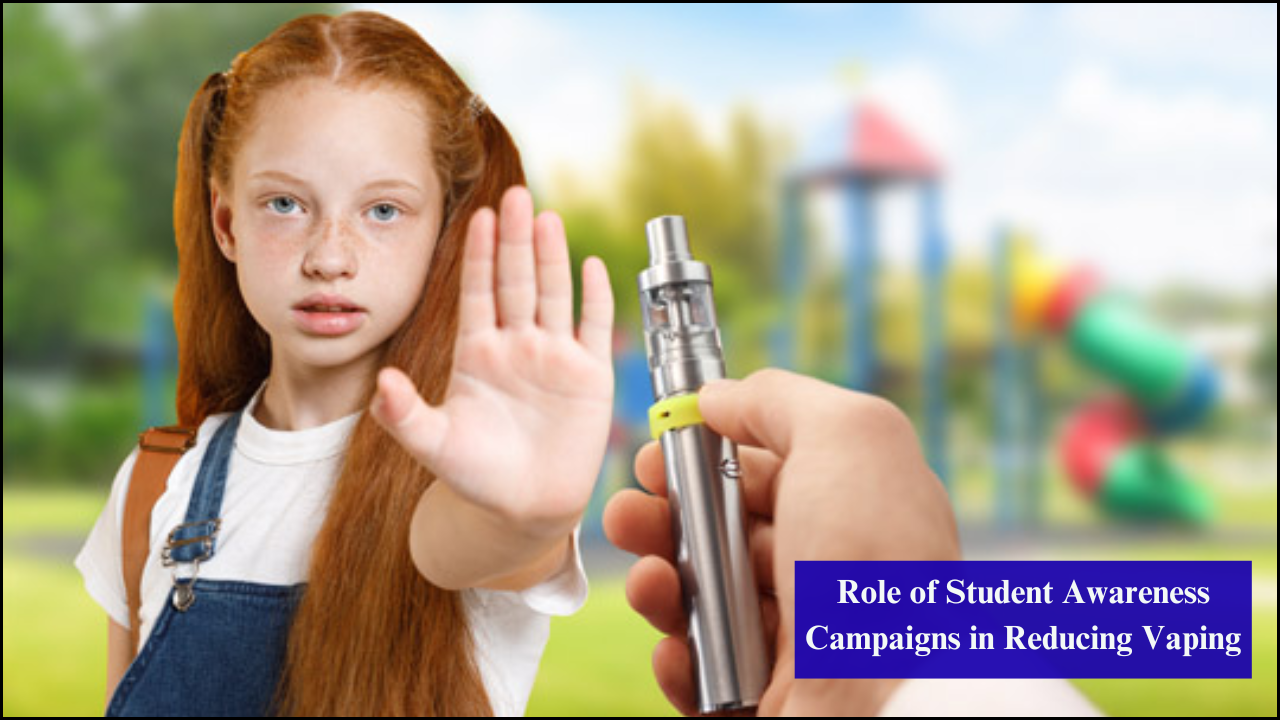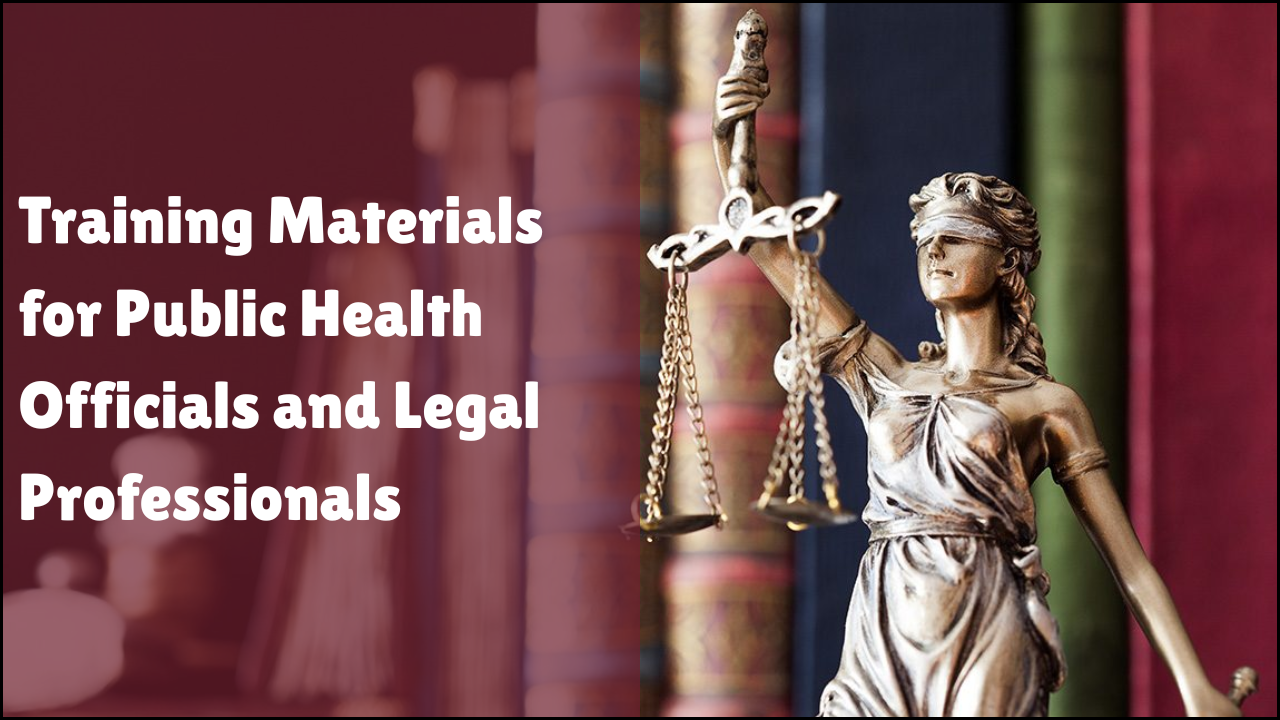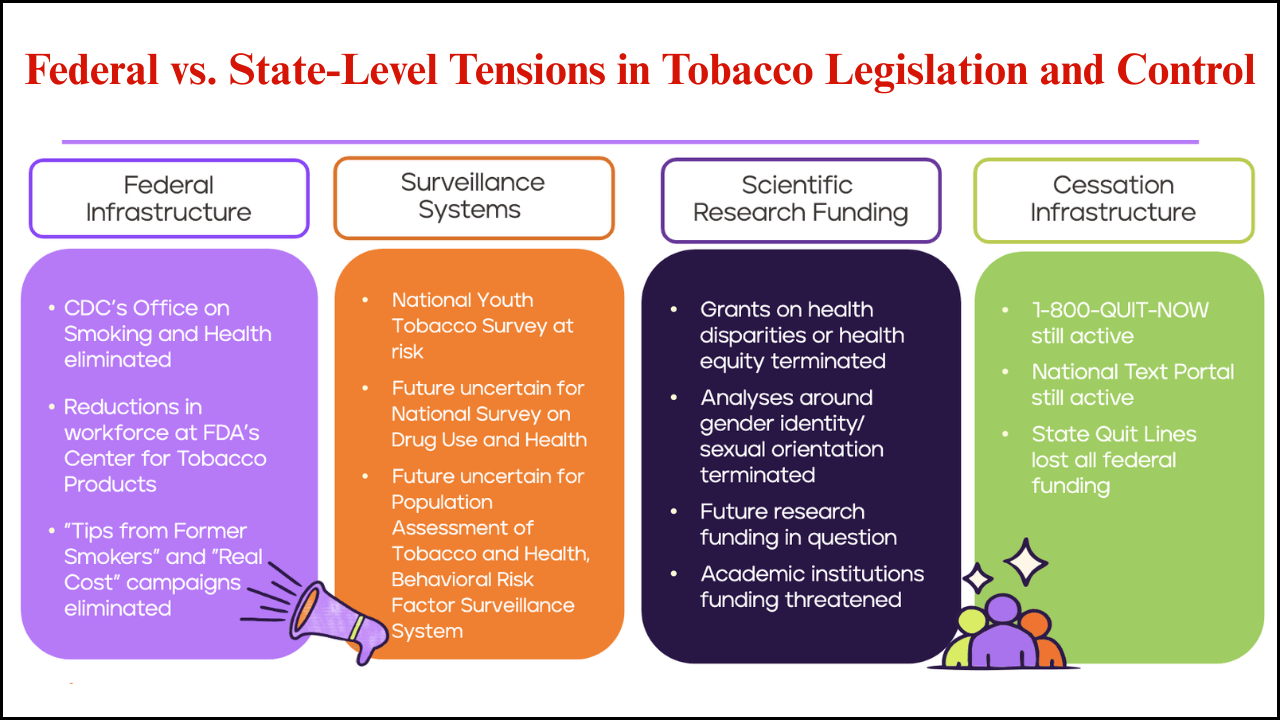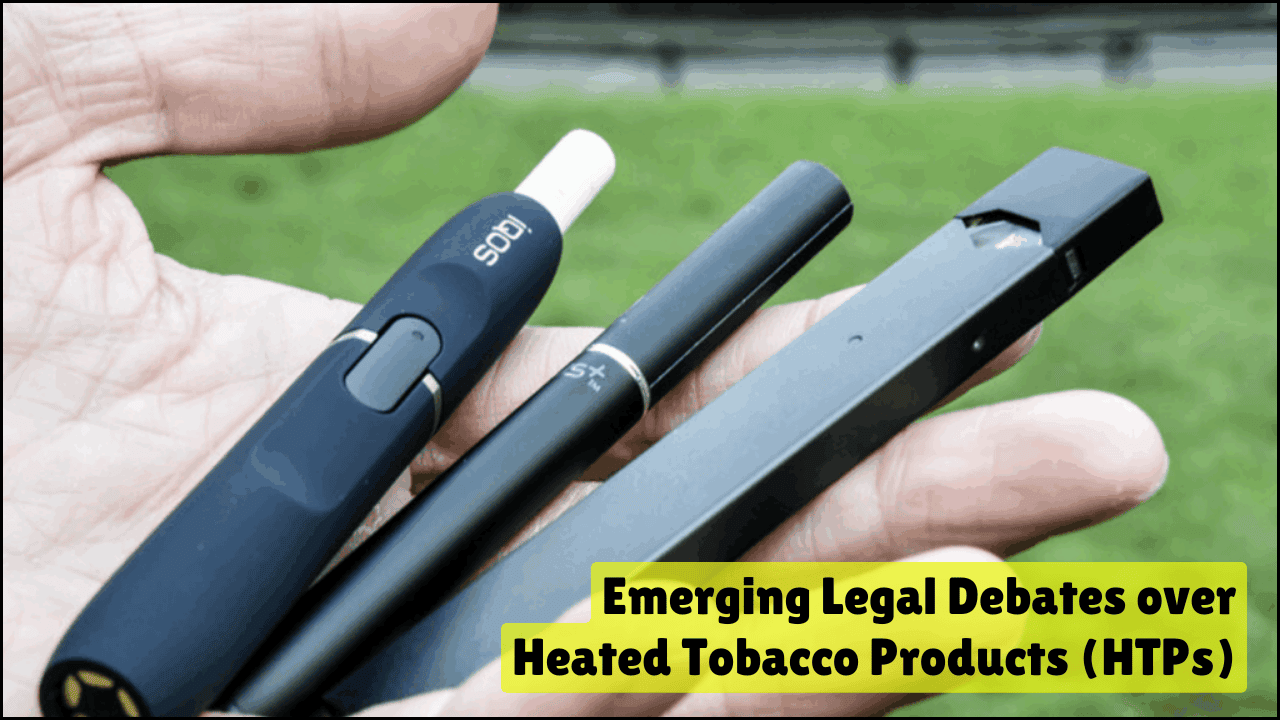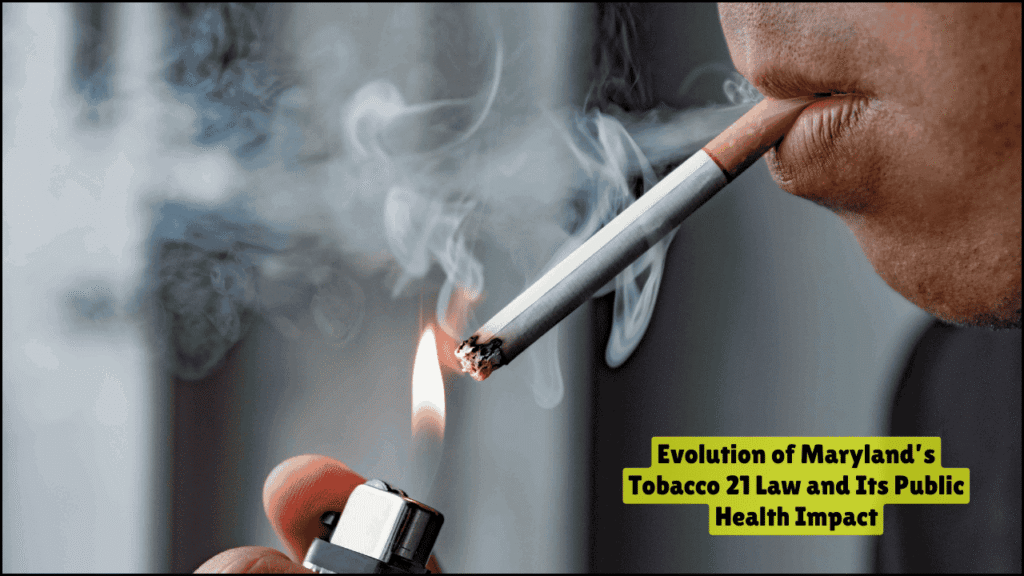
Public health policies have always shaped the health outcomes of society. Maryland’s journey toward adopting the Tobacco 21 law reflects a major effort to reduce youth tobacco use and prevent long-term health risks associated with early nicotine exposure. The law raised the legal age for purchasing tobacco products from 18 to 21, aiming to address rising concerns of vaping, smoking, and nicotine addiction among adolescents.
The evolution of this law shows how legislation, public debate, and scientific evidence merged to create a stronger health protection framework. The following discussion explores the background, development, and impact of Maryland’s Tobacco 21 law while highlighting its role in safeguarding public health.
Table of Contents
Background of Tobacco Use in Maryland
- Tobacco has been a significant contributor to preventable diseases in Maryland.
- Smoking-related illnesses have strained healthcare systems and reduced the quality of life.
- Adolescents in Maryland showed rising use of electronic cigarettes before the law.
- Research revealed that most adult smokers began smoking before the age of 21.
Early Policy Environment
- Initial laws set the minimum age at 18 for purchasing tobacco products.
- Cigarettes, cigars, and smokeless tobacco were widely available in retail stores.
- Enforcement challenges existed due to weak penalties and compliance checks.
- Public health advocates consistently pushed for stricter youth protection measures.
Development of Tobacco 21 Legislation
- Maryland lawmakers introduced the bill after growing national support for Tobacco 21.
- Data from states like California and Hawaii, which had already adopted the law, provided evidence of effectiveness.
- Health organizations such as the American Cancer Society and American Lung Association supported the initiative.
- Concerns were raised by tobacco retailers regarding business losses.
- Lawmakers debated balancing public health interests with economic concerns.
Adoption of Maryland’s Tobacco 21 Law
- The law was officially passed in 2019 and took effect on October 1, 2019.
- Maryland became part of a wave of states aligning with the federal Tobacco 21 movement.
- The law prohibited sales of cigarettes, cigars, smokeless tobacco, and vaping products to individuals under 21.
- Exemptions for active-duty military personnel under 21 were included initially but later removed after federal alignment.
Key Provisions of the Law
- Age restriction raised from 18 to 21 for all tobacco and nicotine products.
- Retailers required to verify age through government-issued identification.
- Vaping products explicitly included to address rising e-cigarette use among youth.
- Enforcement mechanisms involved compliance checks and fines for violations.
- Educational campaigns accompanied the law to inform communities and businesses.
Timeline of Maryland’s Tobacco 21 Evolution
| Year | Event | Details |
|---|---|---|
| Pre-2019 | Minimum age 18 | Tobacco is widely accessible to young adults; a vaping surge has been observed. |
| 2018 | Policy discussions | Tobacco is widely accessible to young adults; a vaping surge has been e observed. |
| 2019 | Law passed | The Legislature approved raising the age to 21 with some exemptions. |
| Oct 2019 | Implementation | The Law took effect, requiring all retailers to comply. |
| Dec 2019 | Federal law passed | National Tobacco 21 signed, aligning Maryland law with federal rules. |
| Post-2019 | Enforcement phase | Compliance checks, penalties, and public education expanded. |
Public Health Impact of the Law
Reduction in Youth Access
- Fewer high school students could legally buy tobacco products.
- Older peers in schools (18–20) were no longer legal sources for younger teens.
- The social supply chain for tobacco access among minors was disrupted.
Impact on Smoking Rates
- Early studies indicated a decline in cigarette sales to underage individuals.
- Youth surveys showed reduced cigarette and vaping experimentation after enforcement.
- Long-term decline in tobacco initiation is expected based on early data trends.
Impact on Retailers
- Retailers faced adjustments in compliance training and ID verification.
- Some business groups initially resisted but later adapted to the new framework.
- Penalties for violations motivated stricter adherence to regulations.
Impact on Healthcare
- Projected healthcare savings due to fewer tobacco-related illnesses.
- Reduced burden on state-funded health programs like Medicaid.
- Greater focus shifted to cessation programs and preventive care.
Public Health Outcomes After Implementation
| Area of Impact | Observed Changes | Long-Term Expectations |
|---|---|---|
| Youth access | Sharp decline in direct retail purchases | Continued reduction in teen initiation rates |
| Smoking prevalence | Drop in youth smoking and vaping experimentation | Significant decrease in adult smoking in future decades |
| Retail compliance | Increase in ID verification practices | Strong culture of regulatory adherence |
| Healthcare system | Early cost savings projected | Substantial reduction in chronic disease burden |
Challenges in Implementation
- Some retailers failed to comply initially due to a lack of awareness.
- Online sales posed difficulties in verifying age accurately.
- Enforcement required significant resources for inspections and monitoring.
- Peer-to-peer tobacco sharing remained a loophole not fully addressed.
- Vape product marketing continued to attract younger audiences despite restrictions.
Community and Educational Efforts
- Schools launched awareness campaigns about the health risks of vaping and smoking.
- Local health departments collaborated with businesses for compliance training.
- Public service announcements spread through media channels to highlight law changes.
- Community groups partnered with health advocates to build tobacco-free environments.
Comparisons with Other States
- States like Massachusetts and New York reported similar positive impacts.
- Maryland’s inclusion of vaping products showed responsiveness to new trends.
- Federal law created uniformity, reducing confusion for retailers across states.
- Some states adopted stricter penalties, providing lessons for Maryland’s enforcement strategies.
Maryland Tobacco 21 vs Other States
| State | Year Adopted | Unique Features | Impact Observed |
|---|---|---|---|
| Maryland | 2019 | Included vaping products; military exemption initially | Decline in youth access; compliance challenges |
| California | 2016 | First large state to adopt; broad educational campaigns | Significant drop in underage smoking |
| Massachusetts | 2018 | Strong penalties for retailers; extensive enforcement | High compliance rates and lower teen use |
| New York | 2019 | Adopted alongside flavored e-cigarette restrictions | Reduced vaping prevalence among high school students |
Future Directions
- Stronger enforcement against online sales is necessary.
- Flavor bans may be considered to further reduce youth attraction.
- Continued public health campaigns can reinforce cultural shifts against tobacco use.
- Monitoring and research should track long-term outcomes for accuracy.
- Collaboration with federal agencies will strengthen consistent enforcement.
Closing Perspectives
Maryland’s Tobacco 21 law reflects a significant milestone in public health policy. The legislation emerged from scientific evidence, community advocacy, and legislative determination to protect youth. Its impact has already reduced access, reshaped retail practices, and projected improvements in long-term health outcomes. While challenges remain, the law represents a clear step toward reducing preventable diseases linked to tobacco. The ongoing commitment to enforcement, education, and adaptation will determine how successfully Maryland sustains the benefits of this transformative policy.



